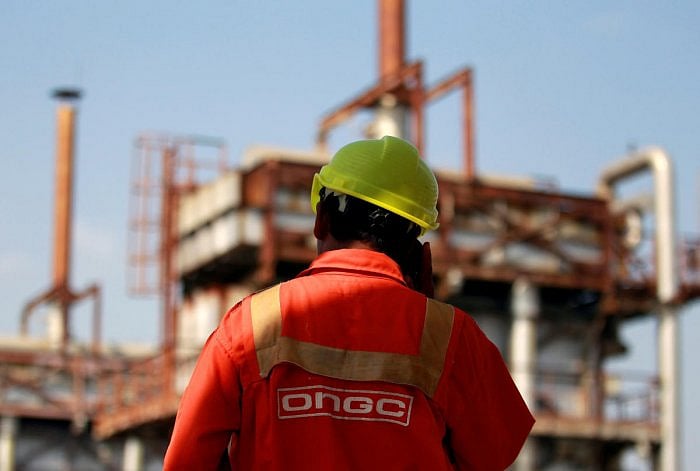
On January 31, 2018, oil and natural gas exploration major Oil and Natural Gas Corporation of India (ONGC) acquired oil marketing company Hindustan Petroleum Corporation Limited (HPCL). The move led to ONGC expanding its presence across oil exploration, production and distribution. The company's Chairman and Managing Director Shashi Shanker at the time of mega-acquisition had said that the acquisition will help ONGC in scaling up rapidly.
"The acquisition of a majority stake in state refining entity, HPCL, was a defining move, one that significantly transforms ONGC’s downstream portfolio. While ONGC in itself remains committed to excellence in the upstream business, HPCL fits well into the group’s integrated energy strategy. HPCL will provide the company, a pure-play refining and marketing edge with an extensive retail presence (over 15,000 outlets) in the country, entailing significant diversification benefits."
However, things don't go always as planned.
Govt benefited most
The bigger beneficiary of this acquisition was the central government. This move helped the government, which was facing huge fiscal slippages, to shore up its revenues. The fiscal deficit, at that point in time was Rs 7.71 lakh crore which was 141% more than the Budget estimate.
There have been criticisms of the divestment process being considered in shoring up the country's fiscal deficit targets: the government loses an asset in lieu of the revenue it's generating. Hence, according to the government finances manual of the International Monetary Fund (IMF), it has to be considered as the financing activity.
But in the case of ONGC's acquisition of HPCL, it was even more bizarre: a government-owned company acquired another government company that filled in the coffers for the government.
Confused?
ONGC, as right now, has its majority stake controlled by the central government. HPCL also had the majority stake (51.11%) with the central government, which ONGC bought for a consideration of Rs 36,915 crore. This is akin to the government moving its money from one pocket to another to show itself richer than it actually is. The Centre, as of date, controls 62.98% stake in ONGC.
Company's finances hit
Broader policy implications aside, the move hit ONGC's financials severely. Even as the company has been doing operationally well, the hit from the acquisition was Rs 34,996 crore for the company.
The cash reserves of the company, dipped by 62% after the acquisition. The short term debt surged by 114% during the year -- a number which is enough to ring the alarm bells. The cash reserves of the company at the group level, which includes all its subsidiaries, dipped Rs 5,062.6 crore in the FY 2017-18, from Rs 13,212.6 crore at the end of 2016-17. At the end of March 2019, it stood at Rs 5,103.5 crore.
If you remove the cash balances of its subsidiaries from the balance sheet of ONGC, the hit in the cash reserve is even more catastrophic. During 2017-18, it dipped by an astounding 87% to Rs 1,279.1 crore from Rs 9,510.8 crore, a year ago. The depletion in the standalone cash reserves continued into this financial year as well -- with cash balances dipping by 61% to paltry Rs 504 crore -- which translates into one-twentieth of what it was two years ago.
When contacted, the company didn't respond to the questionnaire sent by DH.
Operationally efficient
Despite the headwinds in its finances, the company has been operationally doing exceedingly well. The revenues of the company, which stand at Rs 4.53 lakh crore for the FY19, surged by 25.2% and 11.2% in the past two years.
After the 10.6% dip in bottomline in 2017-18, the company bounced back with a 30% surge in net profit, which stood at Rs 33,886.9 crore during 2018-19. In the previous year, the company's bottom line was hit by escalated financing costs, which was primarily driven by the fluctuations in the rupee value leading to increased costs on foreign currency borrowings, and write-offs.
Not only that, the company, over the past three financial years, has given dividends worth Rs 25,040 crore -- Rs 15,770 crore of which has gone into the kitty of the central government. This coupled with the HPCL acquisition, the Rs 52,685 crore worth of ONGC money has filled in the coffers of the Centre in the past three years -- at a time when the government has been struggling to meet its fiscal targets every year.
To put in perspective, the company has paid an average dividend of Rs 8.1 per equity share with a face value of Rs 5 in the past six years, with an average dividend payout rate of 162%. This, in essence, means that the company has been a cash cow for its investors -- the prime beneficiary of which has been the government.
When it comes to oil and gas production in the country, ONGC produces 34.33 million metric tonnes of oil every year, and 30.55 billion cubic meters of gas -- making it the top exploration & production (E&P) company in India and a Maharatna. During 2018-19, the company made 13 hydrocarbon discoveries, of which eight were onshore, while the remaining five were offshore.
Given the importance of ONGC to the country, it may be concluded that it would be prudent for the government not to nudge it too much.
